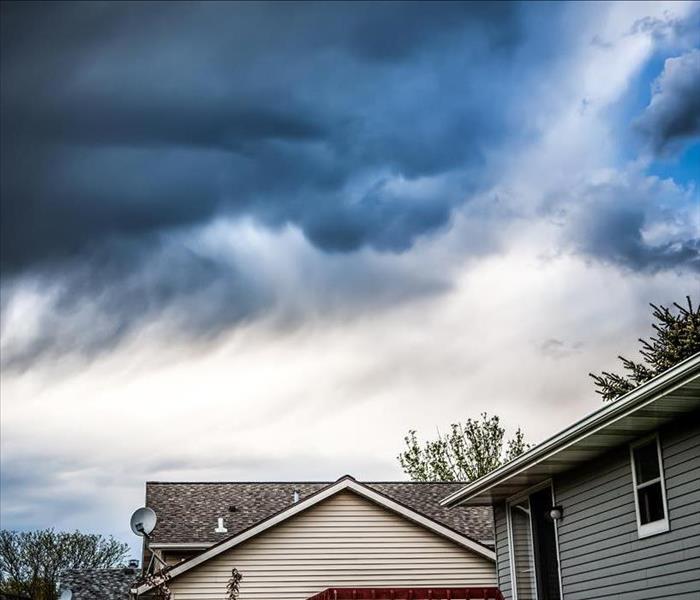How Climate Change Alters Storm Frequency and Intensity on the East Coast
9/11/2023 (Permalink)
 By acknowledging these changes, we can better prepare for the challenges that storms may bring and take steps to protect our homes.
By acknowledging these changes, we can better prepare for the challenges that storms may bring and take steps to protect our homes.
As homeowners and property owners on the East Coast, it's essential to be aware of the changing weather patterns and the impact climate change has on storm frequency and intensity in our region. Over the past few decades, there has been growing evidence linking climate change to more frequent and severe storms. In this blog, we'll explore how climate change affects storms on the East Coast and discuss steps you can take to prepare for the potential challenges they bring.
The Link Between Climate Change and Storms
Climate change, primarily driven by human activities, leads to a rise in global temperatures. As the Earth's temperature increases, it disrupts the balance of the atmosphere, causing changes in weather patterns. This disruption contributes to the intensification and increased frequency of storms on the East Coast.
More Frequent and Severe Hurricanes
The warming of the oceans provides more energy for hurricanes to develop and strengthen. Consequently, the East Coast has experienced an increase in the frequency and intensity of hurricanes in recent years. These storms can bring devastating winds, storm surges, and heavy rainfall, leading to extensive property damage and posing a significant threat to coastal communities.
Rising Sea Levels and Storm Surges
One of the consequences of climate change is the melting of polar ice caps, leading to rising sea levels. As a result, storm surges during hurricanes and severe storms have become more destructive, causing coastal flooding and erosion. Property owners along the coast should be especially vigilant and take necessary precautions to protect their homes from these increasing risks.
Increased Precipitation and Flooding
Climate change also alters precipitation patterns, causing more intense and prolonged rainfall events. This increased rainfall can lead to severe flooding, even in regions not typically prone to such disasters. Property owners should evaluate their homes' drainage systems and consider installing measures to mitigate the risk of flooding.
Heat Waves and Extreme Heat Events
In addition to hurricanes and heavy rainfall, climate change contributes to more frequent and prolonged heatwaves on the East Coast. Extreme heat events can damage properties, strain energy resources, and pose risks to residents. Taking measures to improve your home's energy efficiency and installing cooling systems can help you stay comfortable during such extreme weather events.
Preparing for Climate Change-Related Storms
To better cope with the impact of climate change on storm frequency and intensity, homeowners and property owners can take several proactive steps:
- Stay Informed: Keep yourself updated on climate change research and storm forecasts in your area. This information can help you make informed decisions to protect your property and loved ones.
- Invest in Resilient Infrastructure: Consider fortifying your home against potential storm damage by installing storm shutters, reinforcing doors and windows, and securing roof structures.
- Elevate and Protect: If you live in a flood-prone area, elevate your home and consider investing in flood insurance to mitigate the financial impact of potential flooding.
Understanding the impact of climate change on storm frequency and intensity on the East Coast is vital for homeowners and property owners. By acknowledging these changes, we can better prepare for the challenges that storms may bring and take steps to protect our homes, communities, and the environment. Let's work together to build resilience and embrace sustainable practices to mitigate the effects of climate change and safeguard our properties for future generations.


 24/7 Emergency Service
24/7 Emergency Service